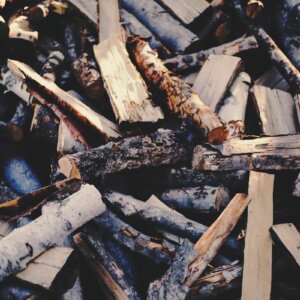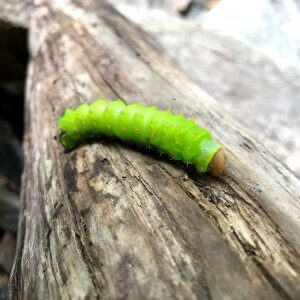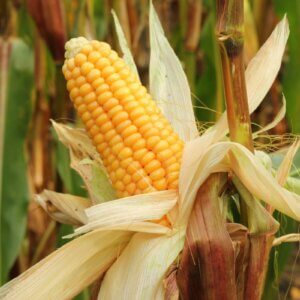Table of Contents
Avocado flesh, peels, and pits are fine to compost as they can provide carbon and nitrogen. By composting these kitchen scraps, you will not only nourish your garden with essential minerals like calcium and potassium, but also reduce landfill waste and carbon footprint. However, optimal composting conditions and proper preparation are crucial factors because avocado peels and pits are dense materials.
Avocado waste can be safely added in a Bokashi bin, cold pile, hot pile, or worm bin. If none of these options are readily available, you can send them to commercial composting facilities.

Learn more about the composting process and considerations when handling avocados below.
How to Compost Avocado
Also called the “green gold” of fruits or “alligator pear,” avocado is a versatile kitchen ingredient perfect for both sweet treats and savory dishes. Its nutritional value makes it a staple for many diets. In the United States alone, avocado production peaked at 149,600 metric tons in 2022.
When consumed, avocados are a fantastic source of carotenoids, fiber, minerals, and multivitamins. Don’t throw away the resulting organic waste. The skin and pit of the avocado can aid your composting activity.
Leftover avocado flesh can also be included in your compost. It is rich in nitrogen, boosting the pile’s microbial development.
Preparing Avocado for Composting
Begin your composting process by removing any nonbiodegradable labels, stickers, or tags on your avocado. These components can leak harmful chemicals into your compost and damage beneficial microorganisms. They also do not decompose like other organic waste.
Gather the peels and cut them into small pieces using a pair of kitchen shears or a knife. You can reduce their size into 1-inch fragments or smaller. Avocado skins are fibrous and tough materials to compost — they break down quite slowly. Cutting them will help accelerate the decomposition process.
Avocado seeds should be prepared similarly. Whole pits will remain in your compost bin or pile for a long time without breaking down. To prevent this delay, crush your avocado pits in a food processor. You can also break them using a hammer.
If you’re having trouble crushing the pits, you can soften them by soaking in water for an hour.
Combine the chopped avocado skins and crushed avocado pits with other carbon-rich materials like dried leaves, shredded brown paper, or untreated wood chips.
Plain avocado flesh that has gone bad or mushy can also be added into your bin or pile and should be mixed with other nitrogen-rich materials like used coffee grounds, fruit scraps, and vegetable trimmings.
Optimal Composting Conditions for Avocado
To successfully compost avocado, follow the ideal carbon to nitrogen ratio of 30:1. Carbon from brown materials acts as an energy source for helpful microorganisms, while nitrogen from green materials helps these microorganisms grow and develop.
You should keep your compost moist, but not overly wet, as an excess of moisture can cause anaerobic decomposition. This condition will result in unpleasant smells and slow decomposition.
In case your compost becomes flooded, incorporate more carbon ingredients that can effectively absorb the excess moisture. For the best compost quality, frequently monitor your bin or pile’s moisture levels, and only add water when necessary.
If you opt to hot compost your avocado scraps, keep the pile’s internal temperature between 90 and 160 degrees Fahrenheit. Regularly turning the pile will help aerate it, which increases the temperature. At these high temperatures, organic waste will decompose faster.
Sustain these optimum conditions to efficiently convert avocado into nutrient-rich soil amendment.
How Long Does Avocado Take to Compost?
Depending on your compost pile’s conditions, avocado scraps can take anywhere between six months to one year to fully decompose. Availability of heat, oxygen, and moisture are determining factors for avocado decomposition rate.
How Avocado Affects the Composting Process
Avocado pits and skin are dense compost materials. Incorrect preparation can slow down your composting process.
Impact on Decomposition
Due to the toughness of the avocado pits and skin, reducing their size is necessary to facilitate quicker decomposition. Leaving them uncut will slow the decomposition and could block proper airflow in your compost bin or pile.
In comparison, the mushy flesh will disintegrate faster compared to the rest of the fruit.
Microbial Activity
As they decompose, the avocado scraps provide nutrients that support healthy microbial activity. A balanced mix of carbon and nitrogen will increase the efficiency of your bin or pile in turning organic wastes to compost.
Before adding avocados, make sure to remove any nonbiodegradable tags on the skins to safeguard beneficial microorganisms from hazardous chemicals.
Temperature and Moisture
Your compost pile’s internal temperature will rise from microbial activity. Carbon from the avocado pits and skins, and nitrogen from the avocado meat, promotes beneficial growth of these microorganisms. Hot piles reaching the optimal temperature range can convert organic waste into humus-like compost more efficiently.
The leftover pits and skins contribute little moisture to your bin or pile.
On the one hand, the avocado meat is damper than the rest of the fruit, especially when it becomes overripe. If you notice the pile emitting pungent odors, inspect it for excess moisture. You can mitigate this problem by incorporating more carbon materials until the unwanted liquids are absorbed.
Potential Issues With Composting Avocado
Common composting issues are associated with mismanagement of composting avocado scraps. You can take steps to lessen the likelihood of these problems.
Will Composting Avocado Attract Pests?
Avocado waste can draw in pests like ants, fruit flies, and rodents. Nutrients and sugar attract these pests, possibly wreaking havoc in your bin or pile. You can prevent these unwelcome visitors by sealing your compost bin with a lid or covering the pile with a sheet of board or metal.
Will Composting Avocado Cause Odors?
In a well-maintained compost pile, avocado pits and skins typically don’t cause unpleasant odors. However, rotting avocado flesh (due to its moist and oily texture) can become smelly. Prevent this issue by mixing your leftover avocado flesh with brown ingredients.
Additionally, do not overwater and frequently turn your compost pile to overcome anaerobic decomposition.
Methods for Composting
Various composting methods are suitable when processing avocado waste. See your options below and learn what fits your lifestyle and resources.
Hot Composting
Avocados are an excellent addition to hot piles. Aside from carbon, the fruit scraps enrich the resulting compost with essential nutrients. This method is characterized by the heat produced by composting microorganisms. The heat “cooks” organic matter, transforming them into compost quicker than most methods.
Hot composting may not be suitable for all composters. Hot piles need constant maintenance — regular temperature checks and turning for aeration.
Start by chopping your avocado skins and crushing the pits to serve as brown ingredients. If you have any leftover avocado flesh, consider it as a green ingredient. Keep track of the pile’s internal temperature. Turning your compost with a pitchfork or shovel will enhance air circulation and increase temperature.
Cold Composting
New composters should start cold composting their avocado waste and other organic matter. It is a more relaxed approach as it needs less supervision. Naturally occurring bacteria, fungi, insects, and environmental elements are the primary agents of decomposition in cold piles.
There’s no need to maintain optimal temperatures when cold composting avocados. Remember that without the intense heat, cold piles yield compost slower.
Build your cold pile away from the reach of pests. You can integrate your avocado scraps deep within the pile so critters won’t reach them.
Vermicomposting
You can safely add avocados to your vermicompost or worm bin. Prepare the avocado skins and pits as you would when composting them. Chopped avocado skins and crushed avocado seeds are excellent worm bedding. Mix them with other bedding materials like coconut coir or peat moss.
Overripe avocado flesh should be added with caution as they are an oily substance. Slowly introduce them to the worms in moderation and see how they react.
Provide a wide range of food sources to your red wigglers for a healthier farm.
Bokashi Composting
Avocado waste can be included in a Bokashi bucket. Originating from Japan and Korea, Bokashi composting takes advantage of anaerobic decomposition, and ferments food scraps — including uncommon ingredients like dairy products and meat. A Bokashi kit comes with a specialized Bokashi bin and an inoculant bran.
Once the bucket is sealed, the organic wastes are isolated from oxygen. Avocado peelings and pits will take time to break down compared to the flesh.
Alternatives to Composting Avocado
Aside from composting, consider other sustainable options when handling avocado scraps before sending them to landfills.
Industrial Composting of Avocado
Commercial facilities accept avocado scraps and other kitchen wastes. These centers can achieve hot temperatures intense enough to break down organic waste to compost. The finished product is commonly used for agricultural and industrial purposes.
Reach out to the nearest composting center to learn more about how they accept such waste.
Upcycling Avocado
You can give a second life to your disposable avocado scraps. There are unique ways to make them useful again. The avocado pit has trace minerals like calcium, magnesium, and potassium that can improve your health.
Leftover or overripe avocado flesh can be utilized in various recipes like avocado toast and avocado water.
Avocado Pit Tea
Something to drink in the morning or before bed, this simple tea recipe can help lower your cholesterol and improve your digestion. Start by cutting your avocado pit and boiling the pieces in a pot of water for 15 minutes. Fish out the pits and strain the tea to remove any seed residues. Add sugar or honey according to your preference.
Avocado Pit Decorations
If you’re into crafts, avocado pits make a great canvas. You can paint on them for celebrations using eco-friendly paints. If you have woodworking equipment, try carving your next work on an avocado pit to practice.
Avocado Dye
When boiled, avocado skins and pits work well as a natural dye. They give off a natural pink-colored dye that sticks fast on various fabrics. Find more tips on how to successfully use them here.
Feeding Avocado to Chickens and Livestock
In moderate amounts, avocado flesh can be fed to chickens. Avoid giving the pits and skins to your poultry as they contain persin, a substance that is toxic for chickens.
Recent research has linked avocado ingestion to avocado toxicosis that most lactating mammals and birds are vulnerable to. Livestock like cattle, goats, horses, and turkeys are susceptible to this condition – especially in large amounts.
Disposal Options for Avocado
Avocado waste should be disposed of in an appropriate garbage bin. Seal it in a biodegradable bag to avoid pest problems.
What Avocado Shouldn’t Be Composted?
Composters who want an organic compost should discard chemically treated avocados and consider other disposal options.
Avocado scraps with nonbiodegradable components like labels or stickers should be prepared properly. These tags do not decompose and are not good for composting.
Avoid avocados infected with disease as the pathogens may survive your composting activity, and contaminate your garden when the finished compost is applied.
Safety and Precautions When Composting Avocado
Maintain optimal composting conditions to efficiently and safely transform avocados into healthy compost.
Handle moldy avocado waste with caution. To minimize health risks, wear a face mask and a pair of gloves if you have immunity or respiratory problems.
After your composting activity, wash your hands in running water with soap.
FAQ
Can I compost avocado peels and pits?
Yes, avocado peels and pits are fine to compost, but they take significant time to break down. Cutting the peels and crushing the pits into smaller pieces will accelerate their decomposition.
How long does it take for an avocado pit to compost?
Avocado pits take six months to one year before completely decomposing in a well-maintained pile. Crushing the pits in a food processor and sustaining ideal pile conditions will definitely save you time in converting them as compost.
Does composting avocados attract pests?
Nutrients and sugar from avocados can attract pests such as ants, fruit flies, and rodents. During your composting process, you may cover the pile with a sheet of plywood to keep out unwanted visitors.










































Leave a Reply